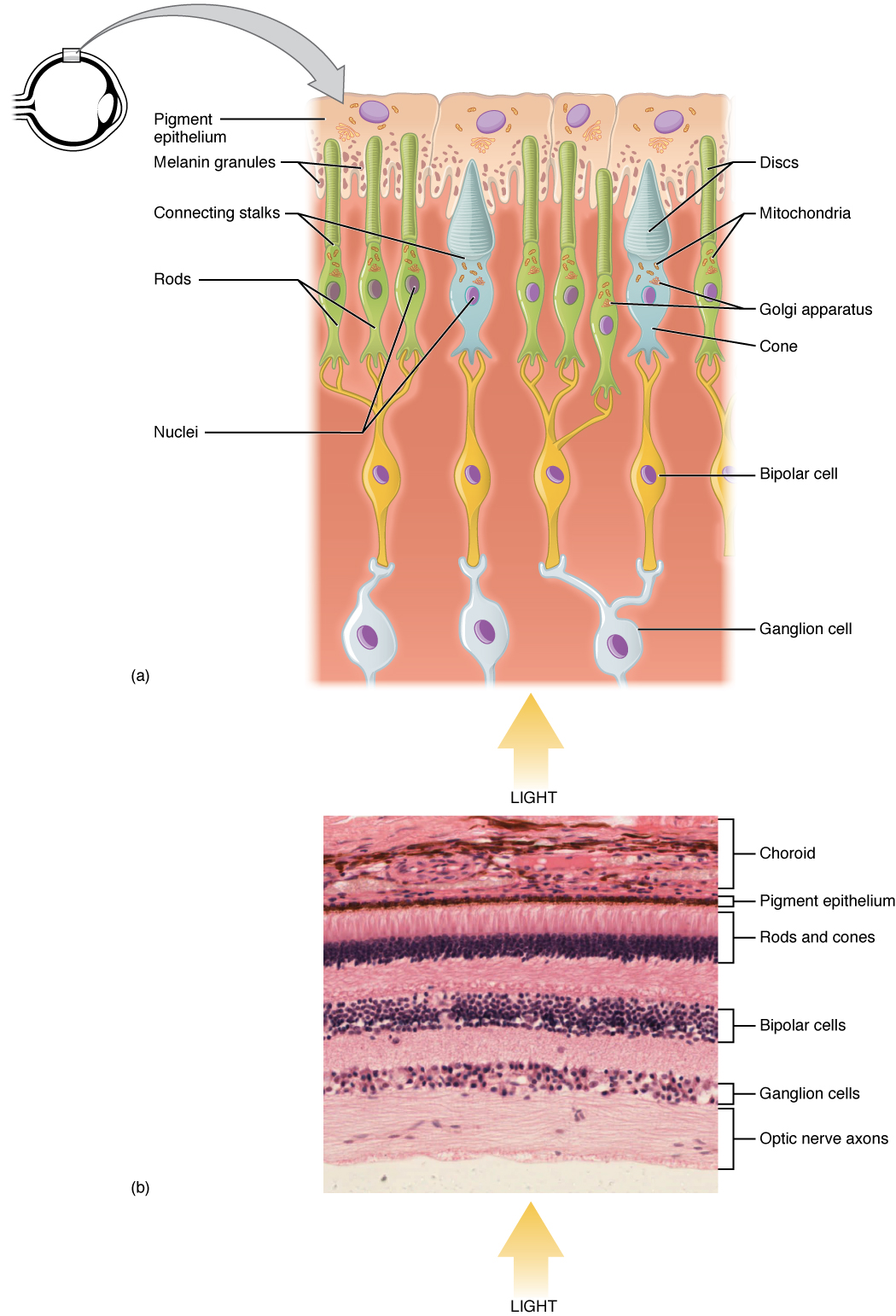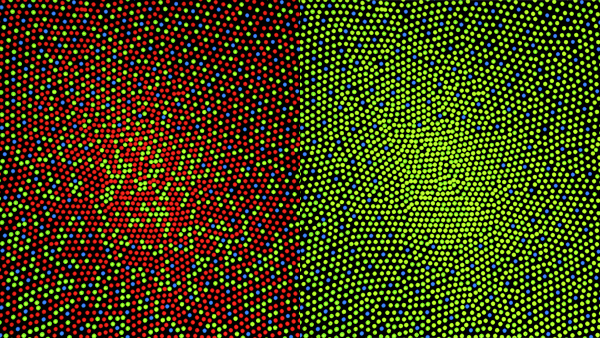Photoreceptors
Enlarge text Shrink text- Encyc. of molecular biology, 1994 (photoreceptor: a light-absorbing molecule which can initiate a specific photochemical reaction leading to a biophysical, biochemical, physiological, developmental or behavioural change in an organism. Known photoreceptors include: bacteriochlorophyll, bacteriorhodopsin, chlorophyll, cryptochrome, phytochrome, protochlorophyll, rhodopsin, and certain carotenoid, biliprotein, flavoprotein and haem pigments)
A photoreceptor cell is a specialized type of neuroepithelial cell found in the retina that is capable of visual phototransduction. The great biological importance of photoreceptors is that they convert light (visible electromagnetic radiation) into signals that can stimulate biological processes. To be more specific, photoreceptor proteins in the cell absorb photons, triggering a change in the cell's membrane potential. There are currently three known types of photoreceptor cells in mammalian eyes: rods, cones, and intrinsically photosensitive retinal ganglion cells. The two classic photoreceptor cells are rods and cones, each contributing information used by the visual system to form an image of the environment, sight. Rods primarily mediate scotopic vision (dim conditions) whereas cones primarily mediate photopic vision (bright conditions), but the processes in each that supports phototransduction is similar. The intrinsically photosensitive retinal ganglion cells were discovered during the 1990s. These cells are thought not to contribute to sight directly, but have a role in the entrainment of the circadian rhythm and the pupillary reflex.
Read more on Wikipedia >
 Topic
Topic




